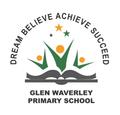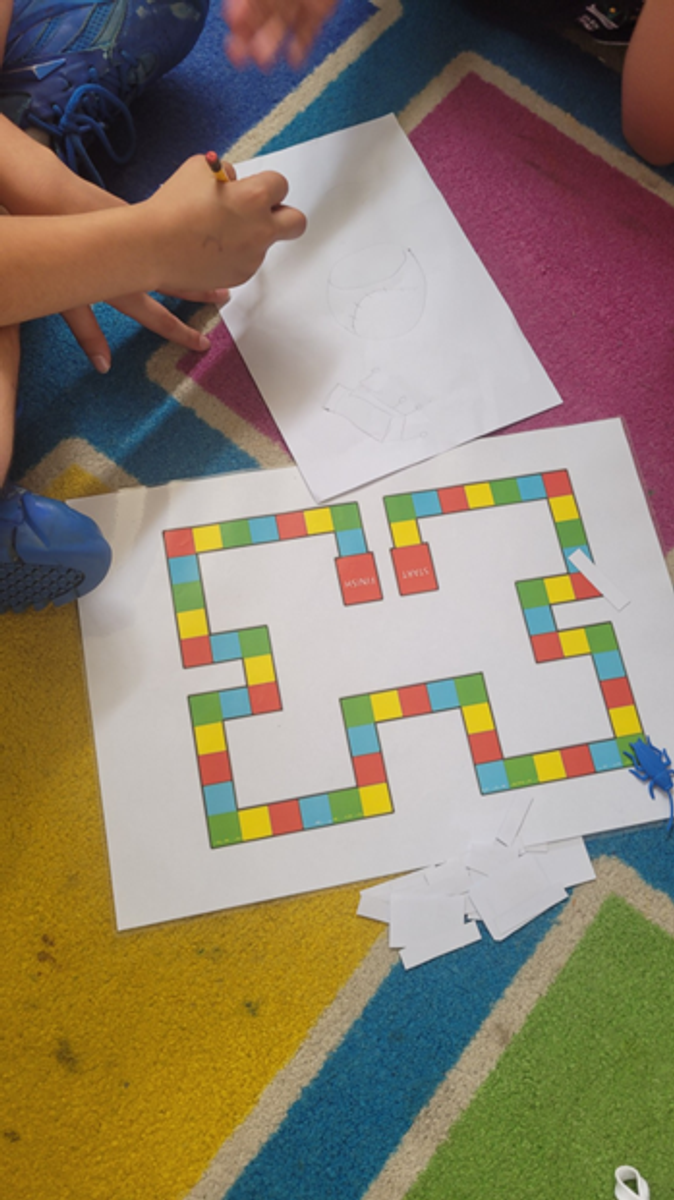Art

What an exciting start to the year! I hope your time spent with your family over the summer break has been fulfilling and has provided you with memories to last a lifetime. It’s time to embark on another journey of exceptional art education. This term, year levels will be exploring a range of materials and techniques, such as sculpting, painting, drawing, and collaging. I eagerly look forward to an exciting and imaginative art period ahead.
Prep
This term, Prep students will embark on an exciting journey of artistic expression using a variety of materials and creative techniques. They will learn about the significance of visual arts for individuals and communities, exploring how art can convey stories, ideas, and connections. Inspiration for their creations will come from Marcus Pfister’s beloved picture storybook, The Rainbow Fish, as well as Aboriginal and Torres Strait Islander Dreamtime stories, including The Rainbow Serpent. These stories will help students understand how art can reflect cultural narratives and celebrate the beauty of nature.
Curriculum Links:
- explore how and why the visual arts are important for people and communities VC2AVAFE01
- Use play, imagination, experimentation, materials and processes to discover possibilities and develop ideas VC2AVAFD01
- Create artworks that communicate experiences, ideas and observations and explore meaning VC2AVAFC01
- Share their visual arts works with viewers and audiences VC2AVAFP01
Key Vocabulary: warm colours, cool colours, watercolour, oil pastel,
Year 1
This term, Year 1 students will delve into the world of artistic storytelling by creating unique animal-themed artworks with patterned designs. Inspired by Aboriginal and Torres Strait Islander symbolism, students will explore how patterns, lines, and cross-hatching (rarrk) can communicate narratives about nature, animals, and places. They will also develop their understanding of art elements, with a focus on how line can be used to create texture, movement, and meaning in their work.
Curriculum Links:
- Explore where, when, why and how people across cultures, communities, times, places and/or other contexts experience visual arts, including artworks created by Aboriginal and Torres Strait Islander Peoples VC2AVA2E01
- Explore ways of using visual conventions, visual arts processes and materials VC2AVA2D01
- Use visual conventions, visual arts processes and materials to create artworks that communicate ideas, experiences and observations VC2AVA2C01
- Present and share artworks in informal settings VC2AVA2P01
Key Vocabulary: pattern, art elements, line,
Year 2
This term, the students will delve into the world of clay, learning different techniques, specifically how to create a slab and use sculpting tools creatively and safely. As part of their learning, students will investigate how natural motifs are used in the art of Aboriginal and Torres Strait Islander Peoples, as well as Indian, Japanese, and Chinese cultures. They will explore the significance of these motifs in different contexts and draw inspiration from them for their own creations. They will put their newfound skills to the test by creating a clay flower or leaf sculpture.
Curriculum Links:
- Explore where, when, why and how people across cultures, communities, times, places and/or other contexts experience visual arts, including artworks created by Aboriginal and Torres Strait Islander Peoples VC2AVA2E01
- Explore ways of using visual conventions, visual arts processes and materials VC2AVA2D01
- Use visual conventions, visual arts processes and materials to create artworks that communicate ideas, experiences and observations VC2AVA2C01
- Present and share artworks in informal settings VC2AVA2P01
Key Vocabulary: slab-making, colour studies, techniques, polishing
Year 3
Students in Year 3 will be honing their painting skills with a canvas project. They will focus on mixing tints and shades to create a range of hues and practise unique brushstrokes inspired by Vincent Van Gogh’s artwork, The Starry Night. As part of their learning, they will make connections to Indigenous Dreamtime stories about constellations and star maps, using these as inspiration for their night sky. Students will also develop their spatial arrangement in artwork, with a strong focus on the art elements of line, shape, colour, and texture.
Curriculum Links:
- Explore and describe artworks, and why, when and how visual arts are created and/or presented across cultures, times, places and other contexts VC2AVA4E01
- Explore how Aboriginal and Torres Strait Islander Peoples use visual arts to communicate their connection to and responsibility for Country and Place VC2AVA4E02
- Develop visual arts practices by exploring and experimenting with visual conventions, visual arts processes and materials to create artworks VC2AVA4D01
- Use visual conventions, visual arts processes and materials to create artworks that communicate ideas, perspectives and meaning VC2AVA4C01
Key Vocabulary: brushstrokes, art elements, spatial arrangement
Year 4
This semester, Year 4 students will explore the art of ceramics by designing and creating clay story tiles. They will investigate how materials, techniques, and visual conventions can be used to express ideas around a theme. Students will study how Aboriginal and Torres Strait Islander Peoples use symbolic designs, patterns, and storytelling to convey their deep connection to Country and culture. They will also learn about the intricate patterns and cultural significance of Islamic tile art, drawing inspiration for their own creations.
Curriculum Links:
- Explore and describe artworks, and why, when and how visual arts are created and/or presented across cultures, times, places and other contexts VC2AVA4E01
- Explore how Aboriginal and Torres Strait Islander Peoples use visual arts to communicate their connection to and responsibility for Country and Place VC2AVA4E02
- Develop visual arts practices by exploring and experimenting with visual conventions, visual arts processes and materials to create artworks VC2AVA4D01
- Use visual conventions, visual arts processes and materials to create artworks that communicate ideas, perspectives and meaning VC2AVA4C01
Key Vocabulary: slab-making, slip and score, symbolism, patterns,
Year 5
The focus for this term will be honing painting skills, with a large landscape canvas painting project at the forefront. Students will use art tutorials to expand their knowledge of blending and colour mixing to create a variety of shades, tints, and tones, while also using a variety of different brushstroke techniques appropriately. Additionally, they will explore the symbolism of landscapes in cultures, such as spiritual connections to the land in Indigenous art and harmony with nature in Asian art. They will develop problem-solving skills by overcoming challenges that arise.
Curriculum Links:
- Explore ways that visual conventions, visual arts processes and materials are used to communicate ideas, perspectives and meaning in visual arts practices across cultures, times, places and other contexts, including from Aboriginal and Torres Strait Islander Peoples VC2AVA6E01
- Explore ways that Aboriginal and Torres Strait Islander Peoples use visual arts to continue and revitalise cultures VC2AVA6E02
- Develop visual arts skills by experimenting with visual conventions, visual arts processes and materials VC2AVA6D01
- Plan and create artworks using visual conventions, visual arts processes and materials to communicate ideas, perspectives and meaning VC2AVA6C01
Key Vocabulary: tints, tones, blending, stippling, wash, gradient
Year 6
In Year 6, students will focus on developing their drawing skills by drawing inspiration from Aboriginal and Torres Strait Islander traditions. They will create artworks based on Indigenous stories, specifically focusing on landscapes that represent a connection to Country. Students will enhance their technical abilities by learning to incorporate the art element of tone and explore various shading techniques, including cross-hatching, stippling, blending, and hatching.
- Explore ways that visual conventions, visual arts processes and materials are used to communicate ideas, perspectives and meaning in visual arts practices across cultures, times, places and other contexts, including from Aboriginal and Torres Strait Islander Peoples VC2AVA6E01
- Explore ways that Aboriginal and Torres Strait Islander Peoples use visual arts to continue and revitalise cultures VC2AVA6E02
- Develop visual arts skills by experimenting with visual conventions, visual arts processes and materials VC2AVA6D01
- Plan and create artworks using visual conventions, visual arts processes and materials to communicate ideas, perspectives and meaning VC2AVA6C01
Key Vocabulary: tone, cross-hatching, hatching, stippling, blending, stump
How can you support your child’s art learning at home?
- Draw, draw and draw! Drawing is the foundational skill in planning and/or creating artworks. Practise drawing and sketching from different subjects (landscapes, still life objects, portraits etc) and learn from references (taking images or studying objects in real life).
- Learn new skills from tutorials, videos and books that demonstrate a step by step method.
- Encourage your child to read and look at other artworks to give an opportunity to analyse and interpret meanings of artworks. You may ask questions such as, “What do you see?” What colours, lines and textures do you see?” “What is happening?”. This will help build your child's visual literacy.


